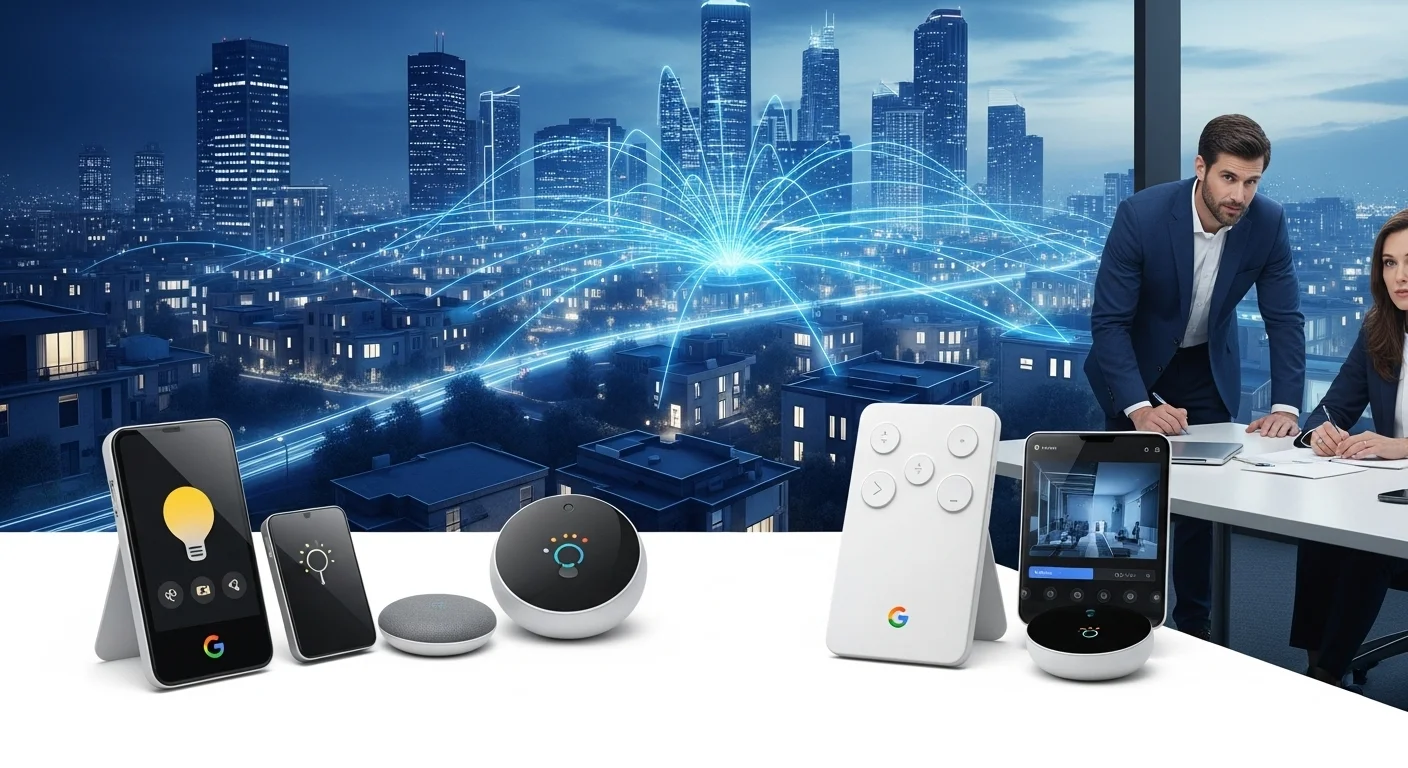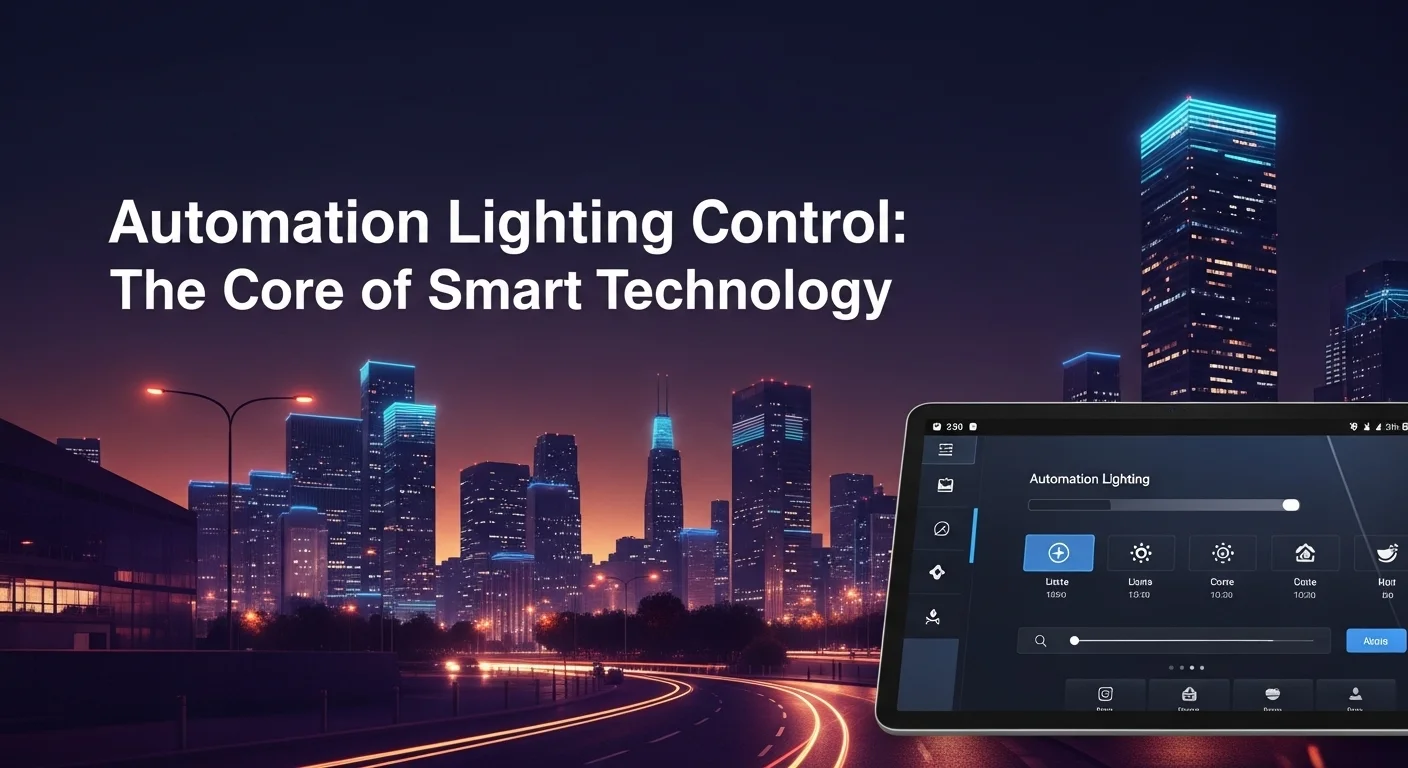Insteon Controllers: The Ultimate Guide to a Bulletproof Smart Home
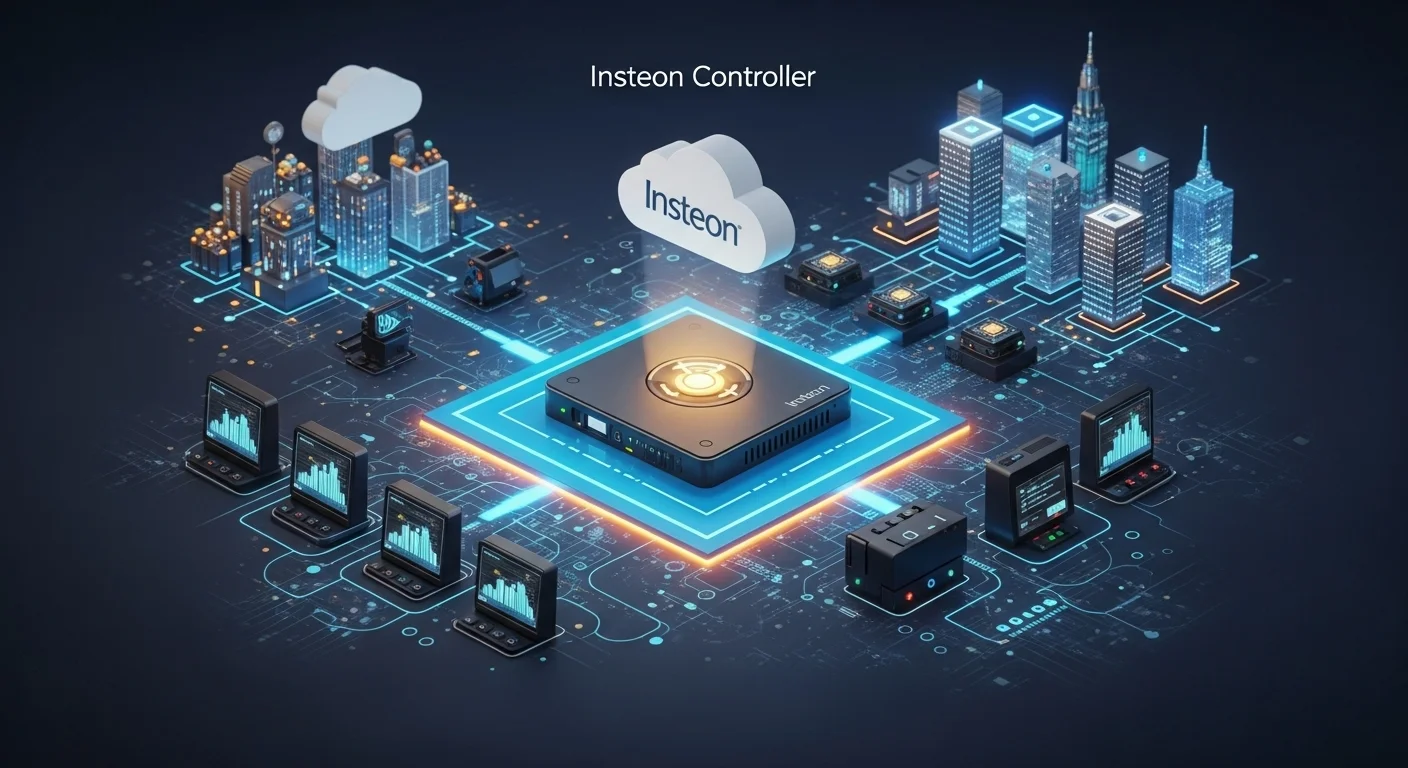
Executive Summary
If you've ever felt frustrated by a smart light that won't respond or a voice command that goes into the void, you're not alone. In the world of smart homes, reliability is everything. This is where Insteon technology truly shines. In this guide, I'm going to walk you through everything you need to know about the Insteon controller, the heart of this incredibly resilient system. We'll look at its unique dual-mesh technology that communicates over both your home's wiring and radio waves. We'll compare the easy-to-use Insteon Hub with the powerhouse Raspberry Pi setup for total local control. We'll even dive into how this tech can save businesses money. From its near-death experience in 2022 to its passionate community revival, the Insteon story is one of resilience, making this a must-read for anyone serious about building a smart home that just works.
Table of Contents
Table of Contents
- What is Insteon and Why Should You Care?
- A Complete Guide to Setting Up Your Insteon System
- Real-World Business Solutions with Insteon
- Pro Tips to Master Your Insteon Experience
- Best Practices for a Rock-Solid Network
What is Insteon and Why Should You Care?
In my years of setting up smart homes, I've seen countless gadgets promise the world but fail on one simple thing: reliability. A smart home isn't smart if it doesn't work every single time. That’s why I keep coming back to Insteon. At the core of every Insteon setup is the Insteon Controller, the brain that directs all the traffic. Understanding this controller is about more than just a piece of tech; it's about embracing a philosophy that puts reliability first.
What makes Insteon so special? It's their patented dual-mesh technology. Imagine you need to send a critical message. Instead of using just one delivery service, you use two different ones simultaneously—say, a bike courier and a drone. That's Insteon. Every device communicates using both the existing electrical wiring in your walls (the powerline) and a wireless radio frequency (RF) signal. If your microwave is making a lot of wireless noise, the signal gets through on the powerline. If a noisy vacuum cleaner messes with the powerline signal, the RF signal takes over. This makes the network incredibly robust and self-healing. When you hit a switch, the light turns on instantly, almost every single time. That's the kind of trust you need for things like security and lighting.
The main brain of this network is usually the Insteon Hub Central Controller. This little box connects your Insteon devices to your smartphone and voice assistants like Alexa or Google Assistant, allowing you to create schedules and scenes. A single 'Movie Night' command can dim the lights, turn on your TV, and lock the front door. But here's the cool part: Insteon devices can also be linked directly to each other. So, even if your internet goes down or your Hub fails, that light switch will still turn on that lamp. It's a level of backup that many cloud-only systems just don't have.
Now, let's talk about the elephant in the room. In April 2022, the original company behind Insteon suddenly shut down its servers, and for a moment, it felt like a disaster. Many users who relied on the app and cloud features were left in the dark. I remember the panic in the online forums. But then, something amazing happened. A group of dedicated users bought the company and brought it back to life. This event, while scary, was the ultimate proof of Insteon's strength. It forced many of us to discover the true power of local control through the Insteon controller Raspberry Pi setup. By using a small computer like a Raspberry Pi with open-source software like Home Assistant, you can run your entire Insteon system without relying on any company's cloud server. The 2022 shutdown accidentally became the best sales pitch for a private, secure, and truly independent smart home.
This technology isn't just for lights and plugs, either. Take the Insteon irrigation controller, for example. I've helped clients integrate their sprinkler systems into their network, creating smart schedules that check the weather forecast to avoid watering on rainy days. It’s this kind of practical, reliable integration for every part of a property—lighting, security, climate, and even landscaping—that makes the Insteon controller a powerful and enduring choice for anyone serious about automation.
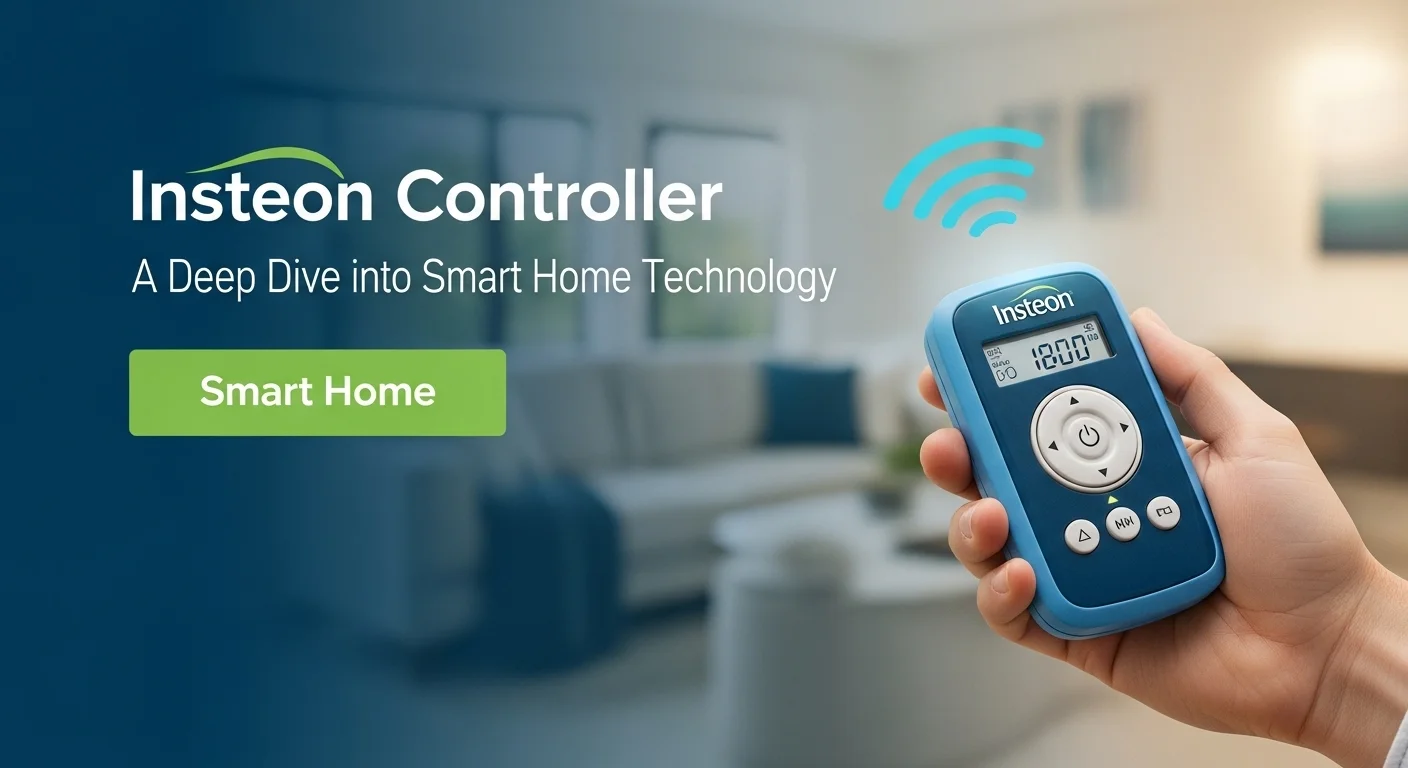
A Complete Guide to Setting Up Your Insteon System
Diving into a smart home project can feel overwhelming, but with Insteon, you have clear paths to follow depending on your comfort level with technology. Let's break down how to get an Insteon Controller up and running, whether you want a simple plug-and-play system or a fully customized powerhouse for your home or business.
Getting Started: Two Paths to Insteon Control
Your journey begins with choosing a controller. Think of it as deciding between a reliable automatic car or a high-performance manual one. Both get you there, but the experience is very different.
1. The Simple Start: The Insteon Hub (Model 2245-222)
This is the straightforward choice for most people. I've set these up for family and friends in minutes. You just plug the Hub into your internet router and a power outlet. Download the Insteon Director app, create an account, and it finds the Hub on your network. To add a new light switch or sensor, you tell the app you're adding a device, press a button on the device itself, and voilà—it's paired. You can then name it, control it from your phone, and add it to scenes. The beauty here is the simplicity and official support. The trade-off is that remote access and some features require a subscription, which helps keep the cloud services running.
2. Ultimate Control: The Raspberry Pi with a PowerLinc Modem (PLM)
This is my personal favorite and the path for tech enthusiasts who crave control and privacy. The heart of this setup is a tiny computer, the Raspberry Pi, and an Insteon PLM, which is a modem that plugs into the Pi and speaks the Insteon language. You'll install a free, open-source program called Home Assistant on the Pi. It sounds complex, but the community has made it surprisingly easy. Once it's running, Home Assistant becomes your central hub, not just for Insteon but for thousands of other smart devices from different brands. Pairing is done through the Home Assistant interface, and all your automations and data stay on that little box in your home. This insteon controller raspberry pi setup means your smart home works perfectly even if your internet is down, and you never have to pay a subscription fee. It’s the ultimate in resilience and privacy.
Real-World Business Solutions with Insteon
Insteon isn't just for homes. Its reliability and scalability make it a fantastic, budget-friendly choice for small businesses. An Insteon controller can be the central nervous system for making your business smarter.
Save Money and Streamline Operations
Picture a small restaurant or retail shop. With an Insteon central controller hub, you can create 'Open' and 'Close' scenes. One button press ensures all lights turn on or off, the thermostat adjusts, and music starts playing. No more worrying if an employee forgot to turn off the lights in the back room. I've seen businesses cut their utility bills significantly just by automating their lighting and HVAC schedules. Occupancy sensors in restrooms or storage areas mean you're not paying to light empty rooms.
Boost Security and Peace of Mind
For a fraction of the cost of a traditional security system, you can build a solid monitoring network. Place door and motion sensors at key entry points. If a sensor is tripped after hours, you can have all the lights in the building flash and get an instant notification on your phone. It’s a powerful deterrent and gives you an immediate awareness of what's happening at your property.
Create the Perfect Atmosphere
In a business where ambiance matters, like a spa or a high-end boutique, Insteon is a game-changer. You can design complex lighting scenes that change throughout the day, creating a welcoming morning vibe and a relaxed evening mood, all triggered automatically. For property managers, an Insteon system is a dream. You can remotely manage climate and lighting for rental units, ensuring they are comfortable for arriving guests and not wasting energy when empty. Add an insteon irrigation controller to manage the landscaping, and you have a truly automated, efficient property.
How Insteon Stacks Up
When you're choosing, you'll hear about Z-Wave and Zigbee. They're great protocols, but they only use wireless RF signals. In my experience, in homes with tricky layouts or a lot of signal interference, Insteon's dual-mesh system is noticeably more reliable. The trade-off is that Z-Wave and Zigbee have a wider variety of third-party devices. But here's the secret: with an insteon controller raspberry pi running Home Assistant, you don't have to choose. You can use Insteon for your critical lights and switches and pull in Z-Wave or Zigbee devices for everything else, all managed from one place. It’s truly the best of all worlds.
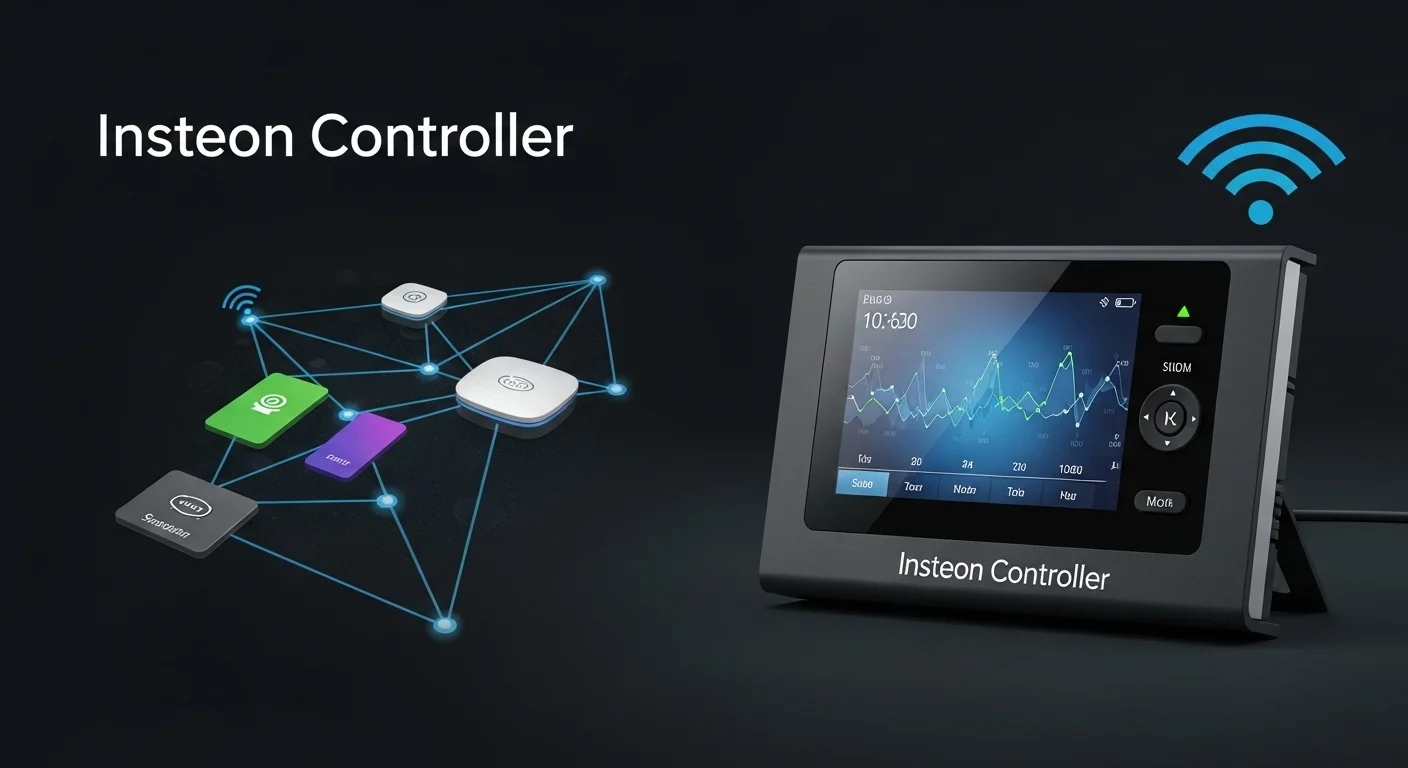
Pro Tips to Master Your Insteon Experience
Once you've got your Insteon system installed, the real fun begins. It's time to go from simply having smart devices to creating a truly intelligent environment. Whether you're using the straightforward insteon hub central controller or a custom insteon controller raspberry pi setup, these are the strategies I've learned over the years to make your network flawless and your automations magical.
Best Practices for a Rock-Solid Network
The health of your Insteon network is everything. Its famous reliability comes from that dual-mesh system, and a few simple practices will ensure it's always performing at its peak.
1. Think Like a Mesh Builder: Remember, every plug-in or wired Insteon device is a signal repeater. Don't just cluster them all in one room. As you add devices, try to create a 'chain' of signal repeaters that spans your entire property. If you have a far-off garage or a second story, make sure you have at least one or two devices in between to act as a bridge. This strengthens your network with every device you add.
2. The Secret Weapon: A Phase-Coupler: This is the single best upgrade you can make for a bulletproof Insteon network, and something many beginners overlook. Most US homes have split-phase power, meaning the electrical circuits are split into two halves. A signal on one half can struggle to reach the other. A phase-coupler plugs into a 240V outlet (like for your dryer) and physically bridges these two halves. I tell all my clients: if you are serious about Insteon, this is a non-negotiable, must-have device. It ensures powerline signals can travel everywhere.
3. Hunt Down the Noise Makers: Some electronics, especially cheap phone chargers or old power supplies, can create 'noise' on your home's wiring, which can interfere with Insteon signals. If one device seems unreliable, look at what else is plugged in nearby. You can buy a special 'FilterLinc' module that you plug the noisy appliance into. It acts like a pair of noise-canceling headphones for your electrical system, keeping the communication pathways for your insteon central controller hub crystal clear.
Advanced Automation and Integration Strategies
Let's move beyond turning lights on and off. The goal is a home or business that seems to know what you need before you do.
1. Become a Scene Director: Scenes are your superpower. Don't just create 'Good Morning' and 'Goodnight'. Get creative! How about a 'Cooking' scene that brightens the kitchen lights and turns on a smart speaker with your favorite playlist? Or a 'Focus' scene for your office that sets the lights perfectly, closes the smart blinds, and turns on a 'Do Not Disturb' indicator light? With an insteon controller, these can be triggered by a button, your voice, a sensor, or the time of day.
2. Unleash the Universal Translator: The standard Insteon Hub plays nicely with Alexa and Google, but an insteon controller raspberry pi running Home Assistant turns your system into a United Nations for smart devices. This is where the real magic happens. You can create automations that cross brands effortlessly. For example: When my Eufy (Wi-Fi) security camera detects a person in the driveway, my Insteon porch lights and hallway lights automatically turn on. When my Ecobee (Wi-Fi) thermostat sees the humidity rise, it can trigger an Insteon-controlled exhaust fan. This is how you build a truly interconnected, future-proof system.
3. Use Every Tool in the Box: Think beyond the obvious. That insteon irrigation controller can be more than just a timer. Link it to a weather service via Home Assistant to automatically skip watering if rain is forecast for tonight. Use an I/O Linc module to connect your existing 'dumb' garage door opener to Insteon, allowing you to check its status and close it from anywhere in the world. Every part of your property can be brought into one unified, intelligent system.
Security, Privacy, and Business Smarts
In our connected world, you have to think about security. The good news is, a well-planned Insteon system can be incredibly secure.
1. Local Control is Your Best Defense: The biggest privacy win for Insteon, especially with a Raspberry Pi, is its ability to run 100% locally. Your data isn't being sent to a random server on the internet. This drastically reduces the risk of being hacked and is a huge selling point for privacy-conscious users and businesses. After the 2022 shutdown, we all learned that a system that doesn't depend on the cloud is a system that's more secure and resilient.
2. Lock Your Digital Doors: For the parts that do connect to the internet, like your Wi-Fi router, use strong, unique passwords. It's basic advice, but it's the most important. If your router supports it, enable WPA3 encryption. For my business clients, I often recommend putting the smart home gear on a separate network (a VLAN) to keep it completely isolated from sensitive systems like payment terminals.
3. Use Data to Get Smarter: For a business, your Insteon system is more than just automation; it's a source of intelligence. Analyzing data from motion sensors can show you which parts of your store get the most foot traffic. Smart plugs can tell you which old refrigerator is secretly costing you a fortune in electricity. This transforms your system from a simple controller into a tool for making smarter business decisions. For a deeper look into the broader topic of smart home security, resources like this article from Educause offer excellent context. By combining Insteon's reliable foundation with smart, proactive strategies, you can build an environment that is truly intelligent, secure, and tailored perfectly to you.
Expert Reviews & Testimonials
Sarah Johnson, Cafe Owner ⭐⭐⭐⭐⭐
As a small cafe owner, I was looking for a reliable automation system. This article was a godsend. The practical business examples, especially about creating lighting scenes for ambiance and saving on energy bills, gave me a clear plan. I'm less intimidated by the tech now.
Mike Chen, IT Consultant ⭐⭐⭐⭐⭐
I'm an IT guy, and I've dabbled with smart homes, but the explanation of Insteon's dual-mesh vs. Z-Wave/Zigbee was the clearest I've ever read. The part about using a Raspberry Pi with Home Assistant finally clicked for me. Great, no-fluff guide.
Emma Davis, Long-time User ⭐⭐⭐⭐⭐
I've been an Insteon user for years and lived through the 2022 shutdown. This article perfectly captured the experience and the value of local control. It’s not just a technical manual; it’s a story about why this technology has such a loyal following. Absolutely brilliant and comprehensive.


